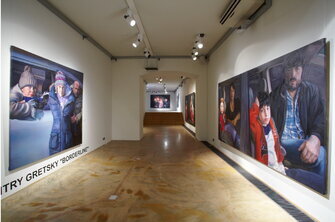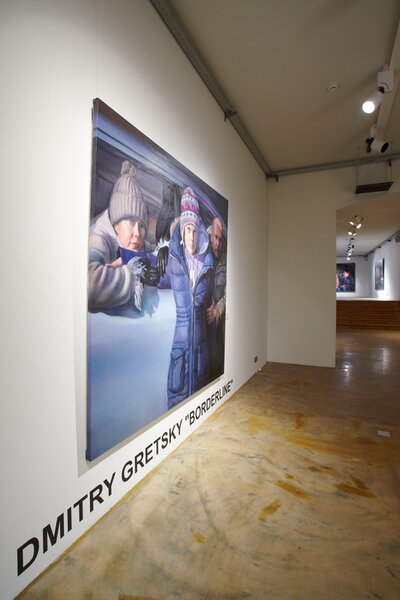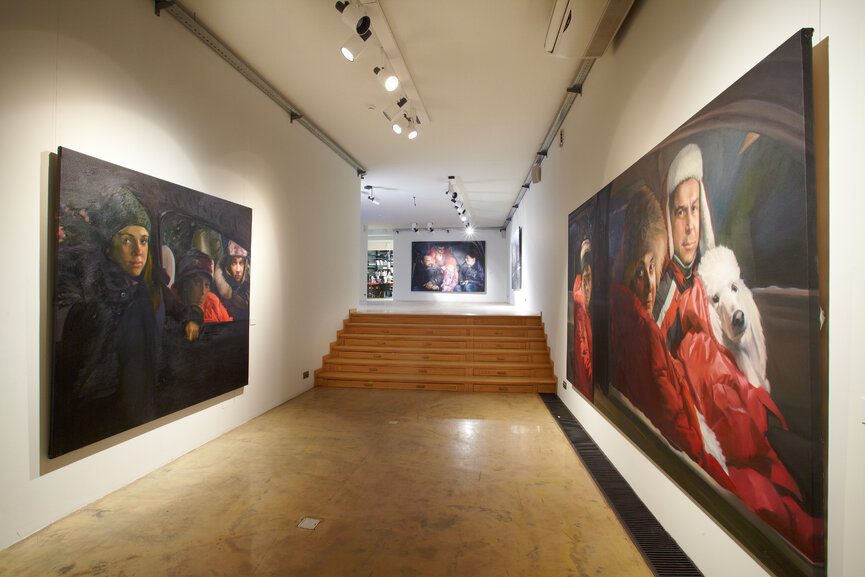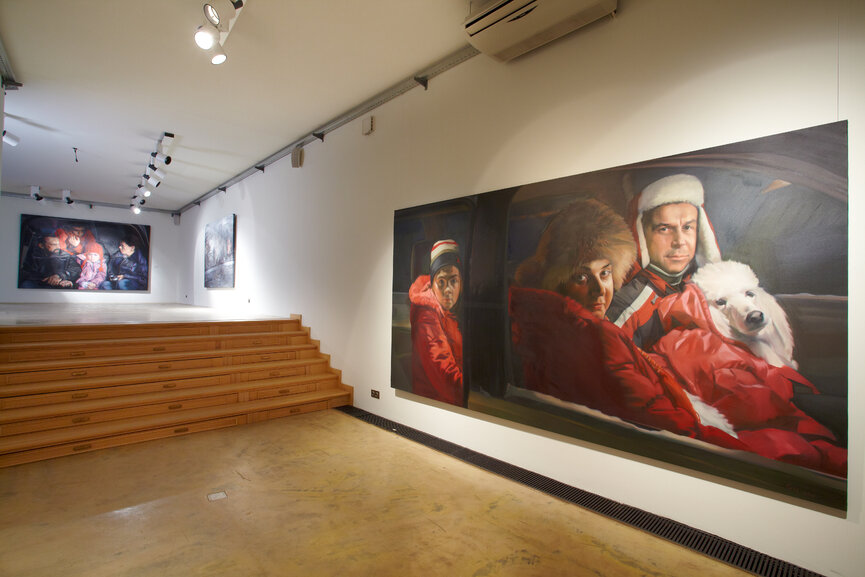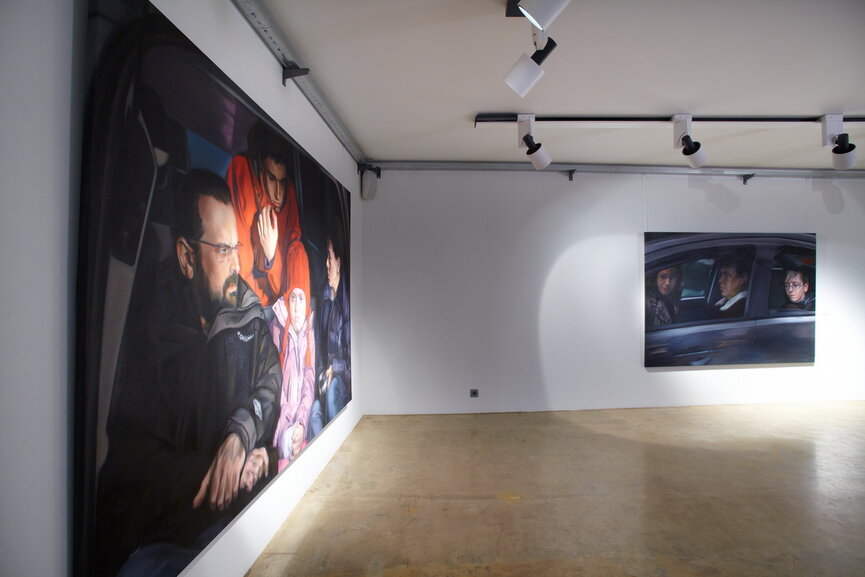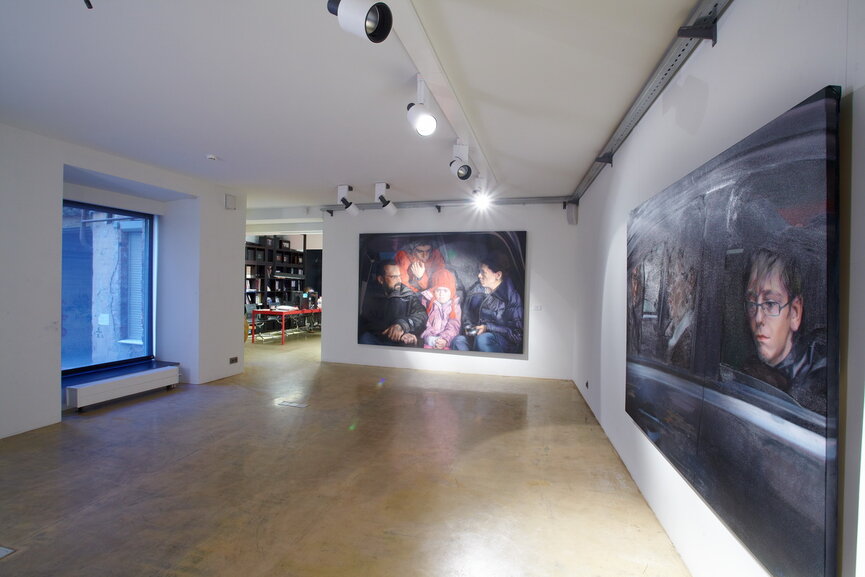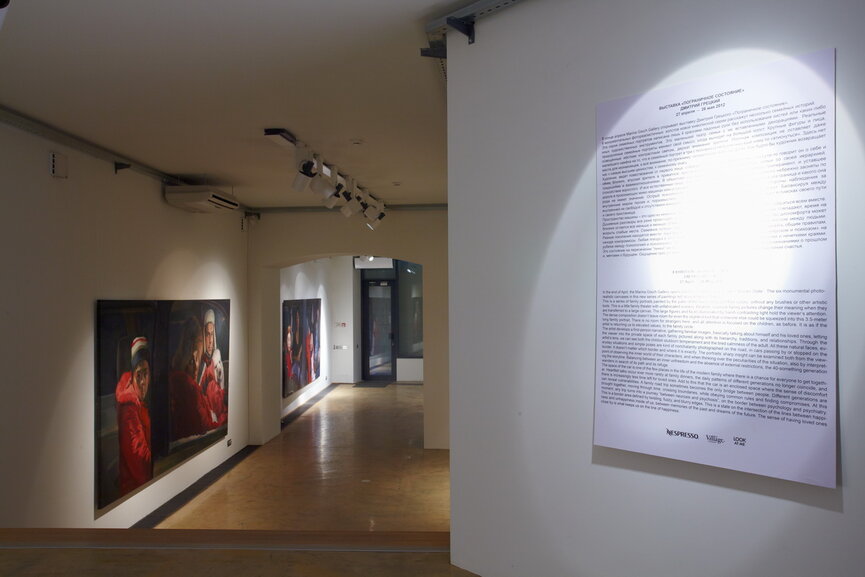DMITRY GRETSKY. BORDERLINE.
The six monumental photo-realistic canvases in this new series of paintings tell several family stories.
This is a series of family portraits painted by the palm of the hand using just four colors, without any brushes or other artistic tools. This is a little family theater with unfabricated scenery. Realistic roadside family pictures change their meaning when they are transferred to a large canvas. The large figures and faces illuminated by harsh contrasting light hold the viewer’s attention. The dense composition doesn’t leave room for even the slightest hint that someone else could be squeezed into this 3.5-meter long family portrait. There is no room for strangers here, and all attention is focused on the children, as before. It is as if the artist is returning us to elevated values, to the family circle.
The artist develops a first-person narrative, gathering familiar images, basically talking about himself and his loved ones, letting the viewer into the private space of each family pictured along with its hierarchy, traditions, and relationships. Through the artist’s lens, we can see both the childish stubborn temperament and the tired calmness of the adult. All these natural faces, everyday situations and simple poses are kind of nonchalantly photographed on the road, in cars passing by or stopped on the border. It doesn’t matter which border and where it is exactly. The portraits’ sharp insight can be examined both from the viewpoint of observing the inner world of their characters, and when thinking over the peculiarities of the situation, also by interpreting the storyline. Balancing between an inner unfreedom and the absence of external restrictions, the 40-something generation wanders in search of its path and its refuge.
The space of the car is one of the few places in the life of the modern family where there is a chance for everyone to get together. Heartfelt talks occur ever more rarely at family dinners, the daily patterns of different generations no longer coincide, and there is increasingly less time left for loved ones. Add to this that the car is an enclosed space where the sense of discomfort can reveal vulnerabilities. A family road trip sometimes becomes the only bridge between people. Different generations are brought together, moving through time, crossing boundaries, while obeying common rules and finding compromises. At this moment, any trip turns into a journey “between neurosis and psychosis”, on the border between psychology and psychiatry. This is a border area defined by twisting, fuzzy, and blurry edges. This is a state on the intersection of the lines between happiness and unhappiness inside of us, between memories of the past and dreams of the future. The sense of having loved ones close by is what keeps us on the line of happiness.
